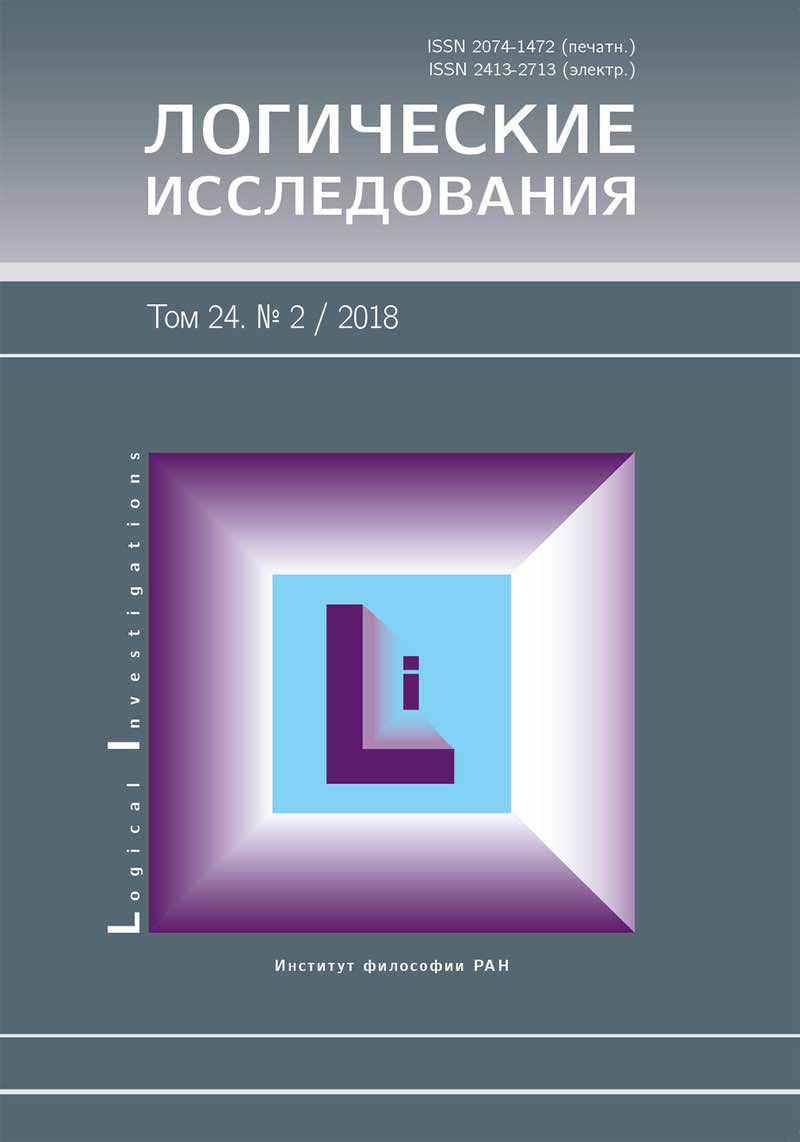Logic of non-classical science
##plugins.themes.bootstrap3.article.main##
Abstract
The first still unresolved problem of theoretical physics — the problem of quantum gravitation — presupposes building a theory unifying the theory of general relativity and quantum theory. All attempts to date have failed. However, it seems that there is one specific answer to this question, albeit by virtue of its nature it was not in the uppermost of the researcher’s mind. Analysis of logical issues in quantum theory leads to the detection of the same general logical foundations both of relativity theory and quantum theory. It turned out that the logical structure of both disciplines is based on the construction of an orthomodular lattice and not Boolean algebra, which is typical for classical physics. On the other hand, taking into account the fact that quantum theory and the theory of relativity are non-classical disciplines, then the common structure underlying both quantum logic and causal logic of space-time should be evaluated as the logical basis of non-classical science in general. It might be considered to be a specific character of the non-classical type of scientific rationality which allows us to consider the links between knowledge on a subject and the specificity of means and activity operations. The construction of an orthomodular lattice is also employed in relativistic quantum theory. In this case, as is shown e.g. in Mark Hadley’s paper “The Logic of Quantum Mechanics Derived from Classical General Relativity” [Hadley, 1997], reasonable assumptions about the role of the measurement apparatus leads to an orthomodular lattice of propositions characteristic to quantum logic. In so doing, an orthomodular lattice is not assumed as the basis of the theory but is discovered during the process of inquiry under detailed analysis. It would be detected in quantum theory as well as in the theory of relativity. But should it be assumed as the basis of the unified formal apparatus for resolving the problem of quantum gravitation? It is most likely that the presence of an orthomodular lattice structure in the depth of quantum theory and the theory of relativity is a consequence of the non-classical nature of these disciplines. The lack of a distinguished implication connective (the conditional) in orthomodular lattice (as demonstrated by G. Kalmbach [Kalmbach, 1974] there are five such conditionals) indicates the need to monitor the peculiarities of our observations, since the implicit choice of “implicative” link between quantum propositions can affect our observation results. DOI: 10.21146/2074-1472-2018-24-2-78-84
##plugins.generic.usageStats.downloads##
##plugins.generic.usageStats.noStats##
##plugins.themes.bootstrap3.article.details##
How to Cite
Vasyukov V. L. Logic of non-classical science // Logicheskie Issledovaniya / Logical Investigations. 2018. VOL. 24. № 2. C. 78-84.
Issue
Section
Papers
References
Макки Дж. Лекции по математическим основам квантовой механики. М.: Мир, 1965. 129 с.
Нейман И. фон. Математические основы квантовой механики. М.: Наука, 1964. 368 с.
Эйнштейн А. Приближенное интегрирование уравнений гравитационного поля // Эйнштейн A. Собр. науч. тр. Т. 1. М.: Наука, 1965. C. 514–523.
Casini H. The logic of causally closed space-time subsets. 2002. // URL: arXiv:gr-qc/0205013 v2 (дата обращения: 22.11.2002).
Cegla W. Causal Logic of Minkowski Space // Current Issues in Quantum Logic / Eds. by S. Beltrametti and B. van Fraassen. N. Y.: Plenum, 1981. P. 419–424.
Hadley M.J. The Logic of Quantum Mechanics Derived from Classical General Relativity // URL: arXiv:quant-ph/9706018v1 (дата обращения: 09.06.1997).
Kalmbach G. Orthomodular Logic // Zeitschr. Math. Log. und Grundl. Math. 1974. Bd. 20, H. 5. S. 395–406.
Smolin L. The trouble with physics: the rise of string theory, the fall of a science, and what comes next. Boston, N. Y.: Houghton Mifflin Company, 2006. 414 p.
Нейман И. фон. Математические основы квантовой механики. М.: Наука, 1964. 368 с.
Эйнштейн А. Приближенное интегрирование уравнений гравитационного поля // Эйнштейн A. Собр. науч. тр. Т. 1. М.: Наука, 1965. C. 514–523.
Casini H. The logic of causally closed space-time subsets. 2002. // URL: arXiv:gr-qc/0205013 v2 (дата обращения: 22.11.2002).
Cegla W. Causal Logic of Minkowski Space // Current Issues in Quantum Logic / Eds. by S. Beltrametti and B. van Fraassen. N. Y.: Plenum, 1981. P. 419–424.
Hadley M.J. The Logic of Quantum Mechanics Derived from Classical General Relativity // URL: arXiv:quant-ph/9706018v1 (дата обращения: 09.06.1997).
Kalmbach G. Orthomodular Logic // Zeitschr. Math. Log. und Grundl. Math. 1974. Bd. 20, H. 5. S. 395–406.
Smolin L. The trouble with physics: the rise of string theory, the fall of a science, and what comes next. Boston, N. Y.: Houghton Mifflin Company, 2006. 414 p.
